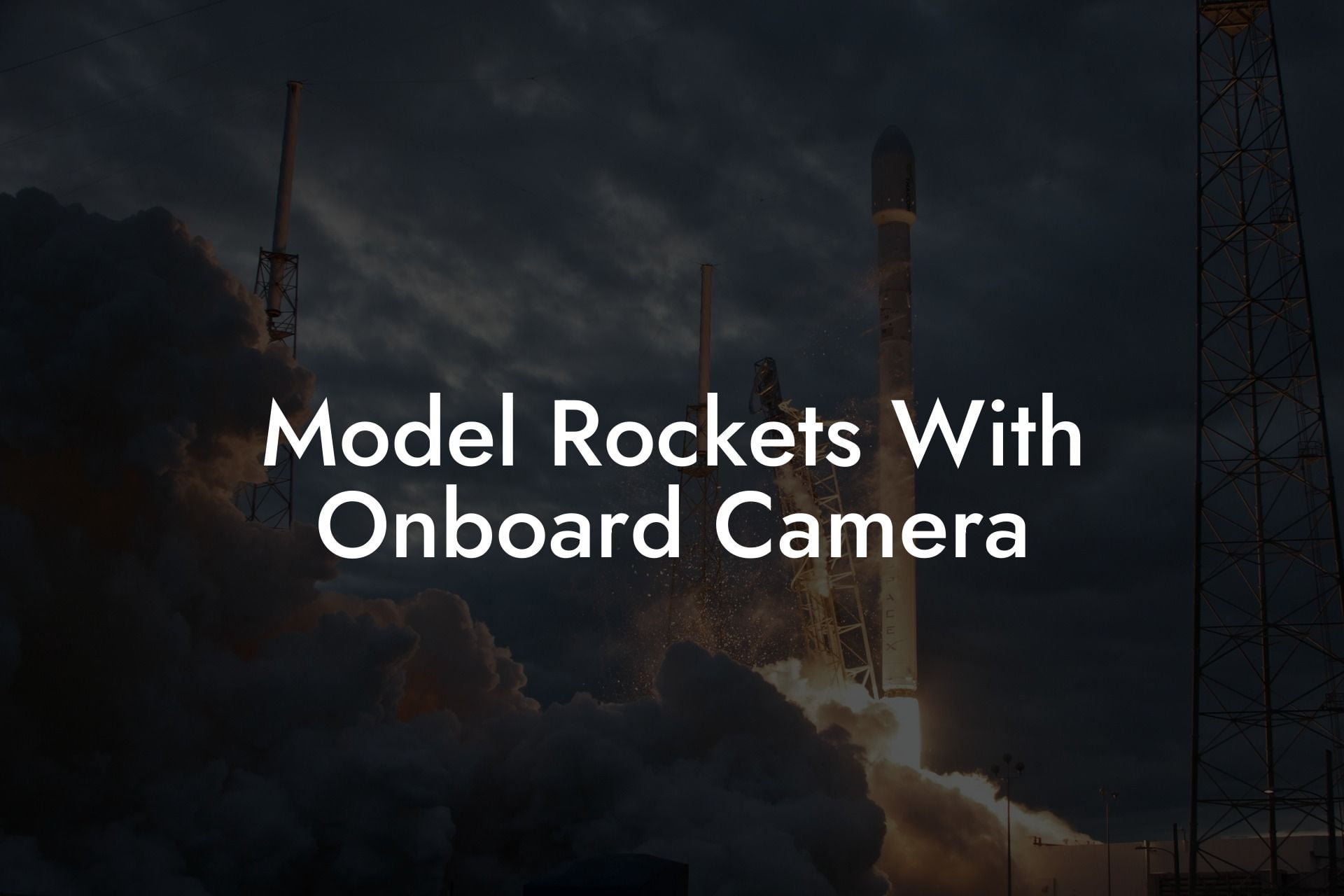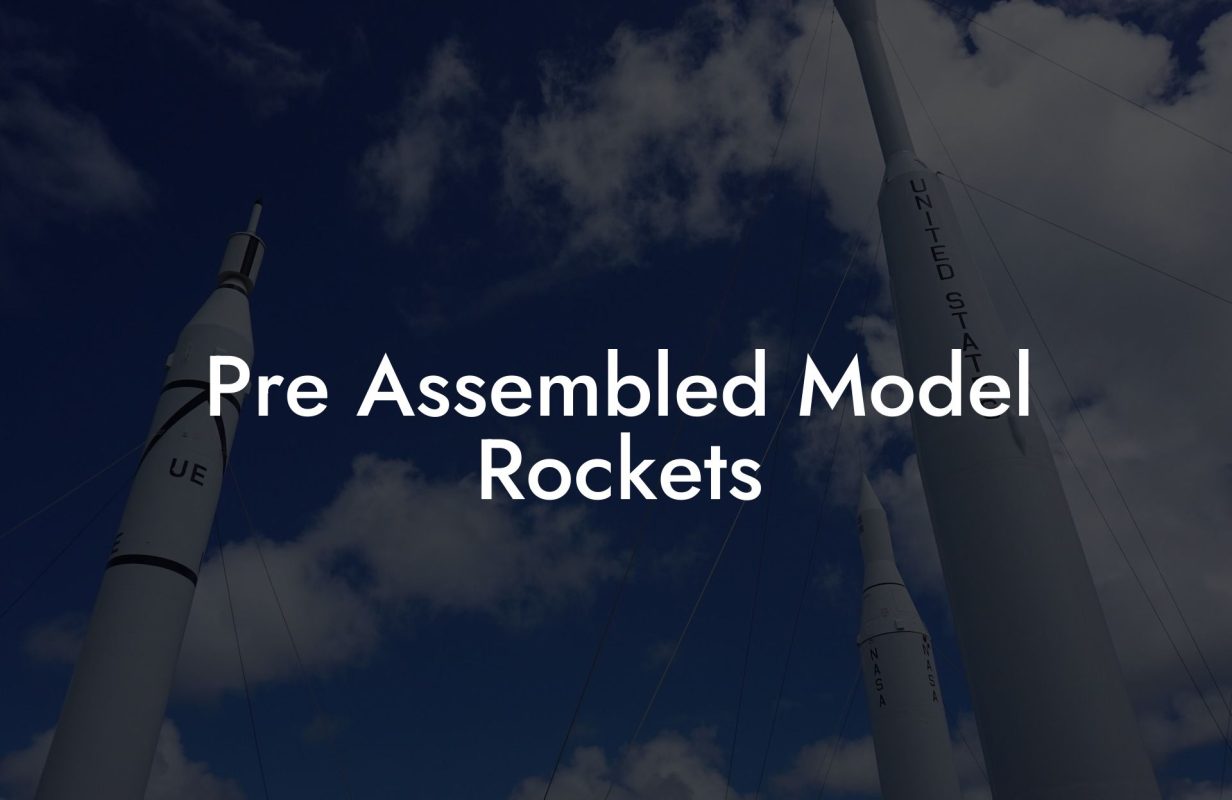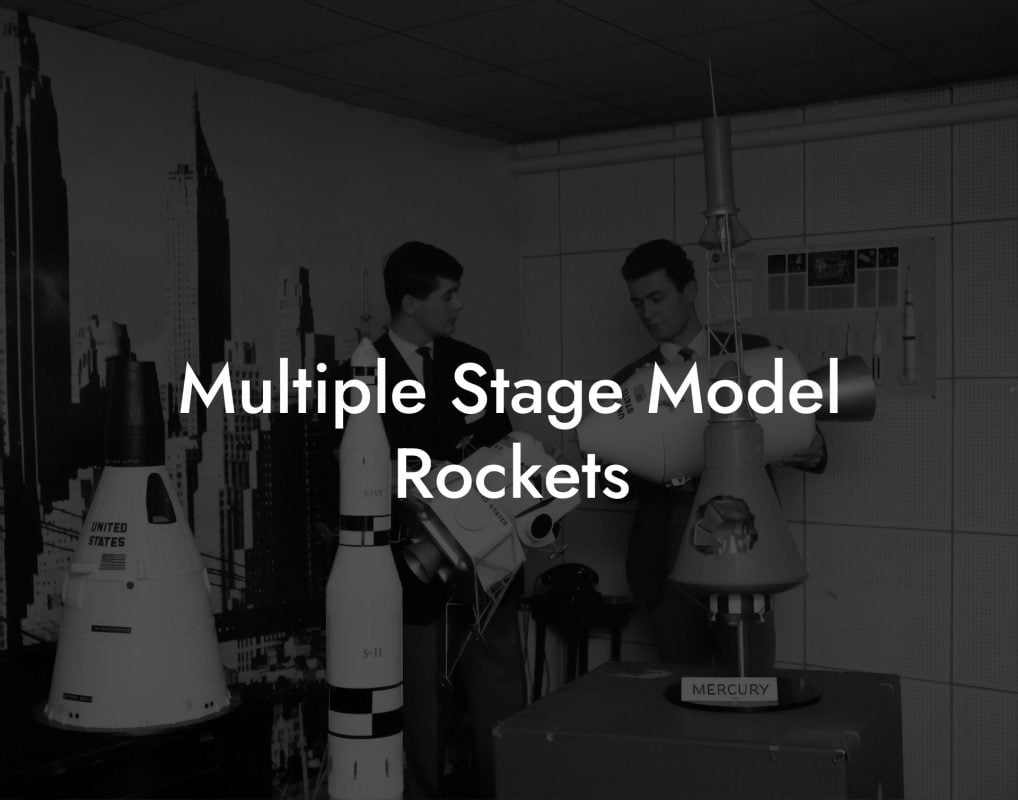Imagine soaring to new heights with your model rocket, capturing breathtaking footage from the edge of the atmosphere. Welcome to the world of model rockets with onboard cameras – where innovation meets adventure and the sky is no longer the limit. Whether you're a seasoned hobbyist or just starting out, this comprehensive guide will walk you through the exciting realm of model rocketry, onboard cameras, and the endless possibilities that await.
Quick Links to Useful Sections
- What Are Model Rockets With Onboard Cameras?
- The Benefits of Model Rockets With Onboard Cameras
- Choosing the Right Onboard Camera
- Key Considerations:
- Installing and Configuring Your Onboard Camera
- Key Steps:
- Model Rocketry Safety and Best Practices
- Key Safety Considerations:
- Resources and Community Support: Your Next Steps
- Recommended Resources:
- Frequently Asked Questions: Model Rockets With Onboard Cameras
What Are Model Rockets With Onboard Cameras?
Model rockets with onboard cameras are a fusion of cutting-edge technology and traditional model rocketry. These innovative rockets are equipped with miniaturized cameras that capture stunning footage during flight, providing an unparalleled perspective on the world from high altitudes.
Onboard cameras have revolutionized the model rocketry experience, allowing enthusiasts to relive their flights in stunning detail and share their adventures with the world. From the rush of liftoff to the serenity of apogee, every moment is captured in breathtaking clarity.
The Benefits of Model Rockets With Onboard Cameras
The integration of onboard cameras has transformed the model rocketry experience, offering a range of benefits that enhance the overall enjoyment and educational value of this exciting hobby.
- Enhanced Experience: Onboard cameras provide an immersive experience, allowing you to relive the thrill of flight and share your adventures with others.
- Improved Performance: By analyzing onboard footage, you can refine your rocket's design and performance, optimizing its aerodynamics and stability.
- Education and Learning: Model rockets with onboard cameras offer a unique platform for STEM education, teaching valuable skills in physics, engineering, and computer science.
- community Engagement: Share your onboard footage with the model rocketry community, inspiring others and fostering a sense of camaraderie and collaboration.
Choosing the Right Onboard Camera
Selecting the perfect onboard camera for your model rocket is crucial, as it must withstand the extreme conditions of flight while capturing high-quality footage.
Looking For The Best Model Rocket Kits? You'll Love These:
Key Considerations:
- Resolution and Frame Rate: Look for cameras with high resolutions (720p or higher) and frame rates (30fps or higher) for smooth, detailed footage.
- Weight and Size: Cameras should be lightweight and compact to minimize their impact on the rocket's overall weight and aerodynamics.
- Shock Resistance: Cameras must be able to withstand the intense vibrations and G-forces experienced during launch and flight.
- Power and Battery Life: Choose cameras with efficient power consumption and long battery life to ensure uninterrupted recording during flight.
Installing and Configuring Your Onboard Camera
Proper installation and configuration of your onboard camera are essential to capturing stunning footage and ensuring the safety of your model rocket.
Key Steps:
- Mounting the Camera: Securely attach the camera to the rocket's fuselage or payload compartment using a sturdy mount or bracket.
- Powering the Camera: Connect the camera to a reliable power source, such as a battery or solar panel, and ensure efficient power consumption.
- Configuring Settings: Adjust camera settings, such as resolution, frame rate, and field of view, to optimize footage quality and capture the desired perspective.
- Testing and Calibration: Perform thorough tests to ensure the camera is functioning correctly and capturing high-quality footage.
Model Rocketry Safety and Best Practices
Safety is paramount in model rocketry, and the integration of onboard cameras introduces new considerations and best practices to ensure a safe and enjoyable experience.
Key Safety Considerations:
- Airspace and Flight Restrictions: Always check local airspace regulations and flight restrictions before launching your model rocket.
- Launch Site Selection: Choose a safe, open launch site with minimal obstacles and no risk of damage to people or property.
- Recovery Systems: Implement reliable recovery systems, such as parachutes or streamers, to ensure the safe return of your rocket and onboard camera.
- Camera Protection: Protect your onboard camera from damage during launch, flight, and recovery using protective casings or mounts.
Resources and Community Support: Your Next Steps
Join the vibrant model rocketry community and tap into a wealth of resources, tutorials, and expert advice to help you get started or take your skills to the next level.
Recommended Resources:
- Model Rocketry Forums: Engage with the model rocketry community on dedicated forums, discussing topics from camera selection to flight optimization.
- Tutorials and Guides: Explore online tutorials and guides covering various aspects of model rocketry, from camera installation to flight analysis.
- Local Clubs and Meetups: Connect with local model rocketry clubs and attend meetups to network with enthusiasts, learn from experts, and share your experiences.
Frequently Asked Questions: Model Rockets With Onboard Cameras
Here are some frequently asked questions about model rockets with onboard cameras, covering topics from camera selection to flight optimization.
1. What type of camera is best for model rockets?
Look for cameras with high resolutions, fast frame rates, and compact designs. Action cameras like GoPro or DJI Osmo Action are popular choices.
2. How do I power my onboard camera?
Use a reliable power source, such as a battery or solar panel, and ensure efficient power consumption to minimize weight and maximize flight time.
3. What safety precautions should I take when flying a model rocket with an onboard camera?
Always check local airspace regulations, choose a safe launch site, and implement reliable recovery systems to ensure the safe return of your rocket and onboard camera.
Looking For The Best Model Rocket Kits? You'll Love These:
Useful Interruption: Dive deeper into the world of Model Rockets with our most popular sections. If there is anything you think is missing or anything you would love for us to write about, just give us a shout.
- Getting Started & Basics With Model Rockets
- Model Rocket Design, Build & Customization
- Model Rocket Propulsion & Engine Technology
- Model Rocket Launch Techniques & Recovery
- Model Rocket Advanced Rocketry & Innovations
- Model Rocket DIY and Customization
- Model Rocket Equipment Reviews & Digital Tools
- Community, Competitions & Education
- Model Rocket Troubleshooting & FAQs
- Model Rocket Bonus/Seasonal & Niche Topics
A group of model rocket enthusiasts gathered at a field for their weekly launch event. Among them was Dave, a seasoned builder known for pushing the limits of hobby rocketry. This time, he had outdone himself.
“Ladies and gentlemen,” Dave announced, dramatically pulling a cloth off his latest creation, “I present to you: The Kraken!”
The crowd gasped. This wasn’t just a model rocket, it was a monster. The thing stood 8 feet tall, had six clustered engines, and was covered in enough duct tape to qualify as a classified aerospace project.
“Dave,” muttered Steve, the cautious safety officer, “Have you, uh… done the math on this?”
“Math?” Dave scoffed. “I built it in my garage at 3 a.m. with parts from eBay. This is an art piece, Steve.”
The countdown began.
5…
4…
3…
2…
1…
The engines ignited with a BOOM, and The Kraken shot up… kind of. It immediately did a violent barrel roll, narrowly missing the spectators before skyrocketing at an angle that could only be described as “legally questionable.”
The crowd collectively ducked as The Kraken flew straight over the adjacent cornfield, where Old Man Jenkins, the grumpiest farmer in town, was minding his business.
KABOOM!
The rocket disappeared behind the barn. A moment later, a flaming piece of Estes igniter wire landed at Steve’s feet. The silence was deafening.
And then, an unmistakable sound echoed across the field.
Jenkins’ shotgun being cocked.
“DAVE!!!” Steve shouted. “RUN.”
And that was the day Dave invented the first-ever biologically powered rocket booster: pure adrenaline.
To this day, nobody knows where The Kraken landed, but legend has it, it still haunts the skies, terrifying unsuspecting drones and low-flying birds.















